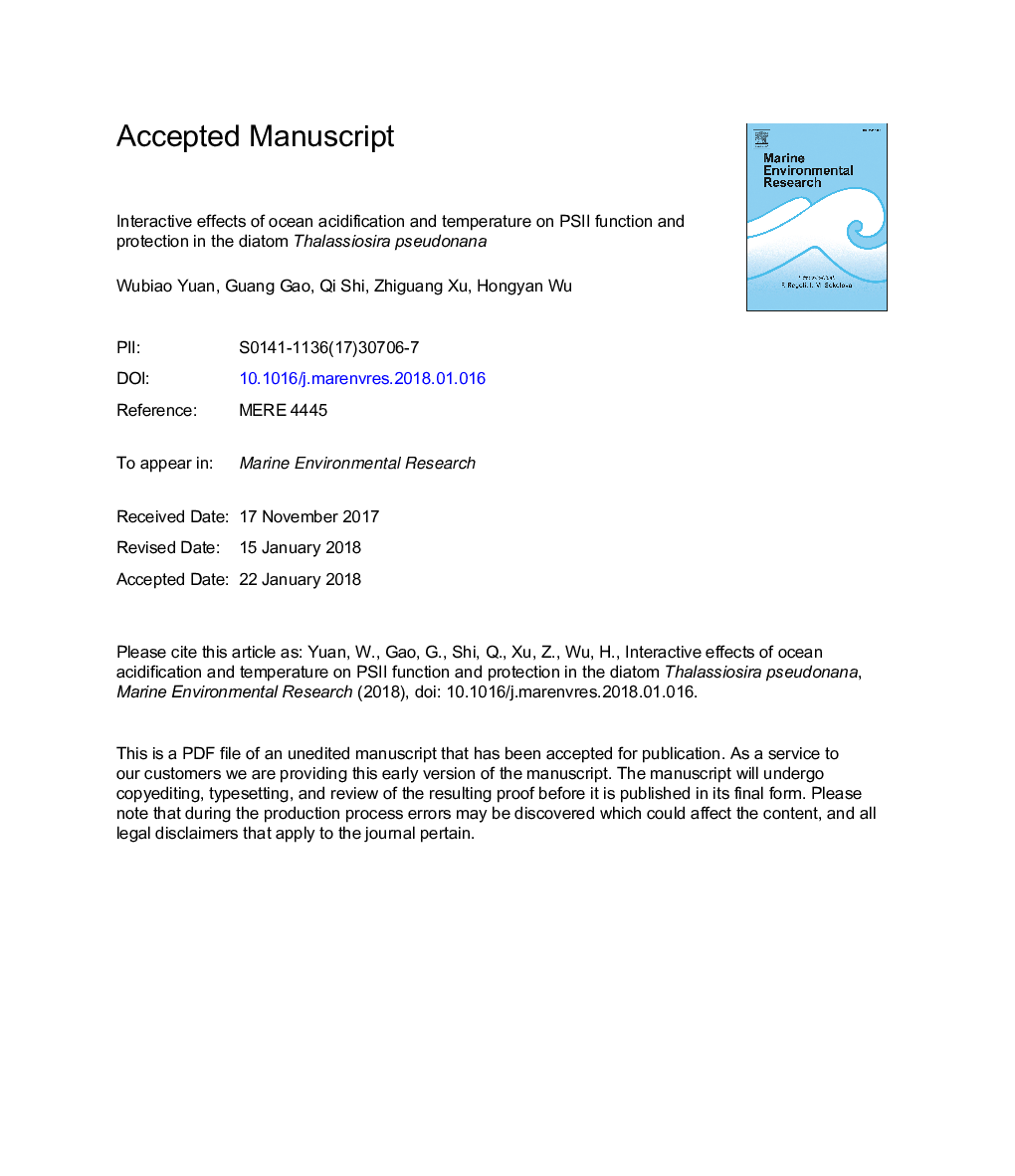| Article ID | Journal | Published Year | Pages | File Type |
|---|---|---|---|---|
| 8886358 | Marine Environmental Research | 2018 | 34 Pages |
Abstract
Diatoms are one of the most important groups of phytoplankton in terms of abundance and ecological functionality in the ocean. They usually dominate the phytoplankton communities in coastal waters and experience frequent and large fluctuations in light. In order to evaluate the combined effects of ocean warming and acidification on the diatom's exploitation of variable light environments, we grew a globally abundant diatom Thalassiosira pseudonana under two levels of temperature (18, 24â¯Â°C) and pCO2 (400, 1000â¯Î¼atm) to examine its physiological performance after light challenge. It showed that the higher temperature increased the photoinactivation rate in T. pseudonana at 400â¯Î¼atm pCO2, while the higher pCO2 alleviated the negative effect of the higher temperature on PSII photoinactivation. Higher pCO2 stimulated much faster PsbA removal, but it still lagged behind the photoinactivation of PSII under high light. Although the sustained phase of nonphotochemical quenching (NPQs) and activity of superoxide dismutase (SOD) were provoked during the high light exposure in T. pseudonana under the combined pCO2 and temperature conditions, it could not offset the damage caused by these multiple environmental changes, leading to decreased maximum photochemical yield.
Related Topics
Physical Sciences and Engineering
Earth and Planetary Sciences
Oceanography
Authors
Wubiao Yuan, Guang Gao, Qi Shi, Zhiguang Xu, Hongyan Wu,
